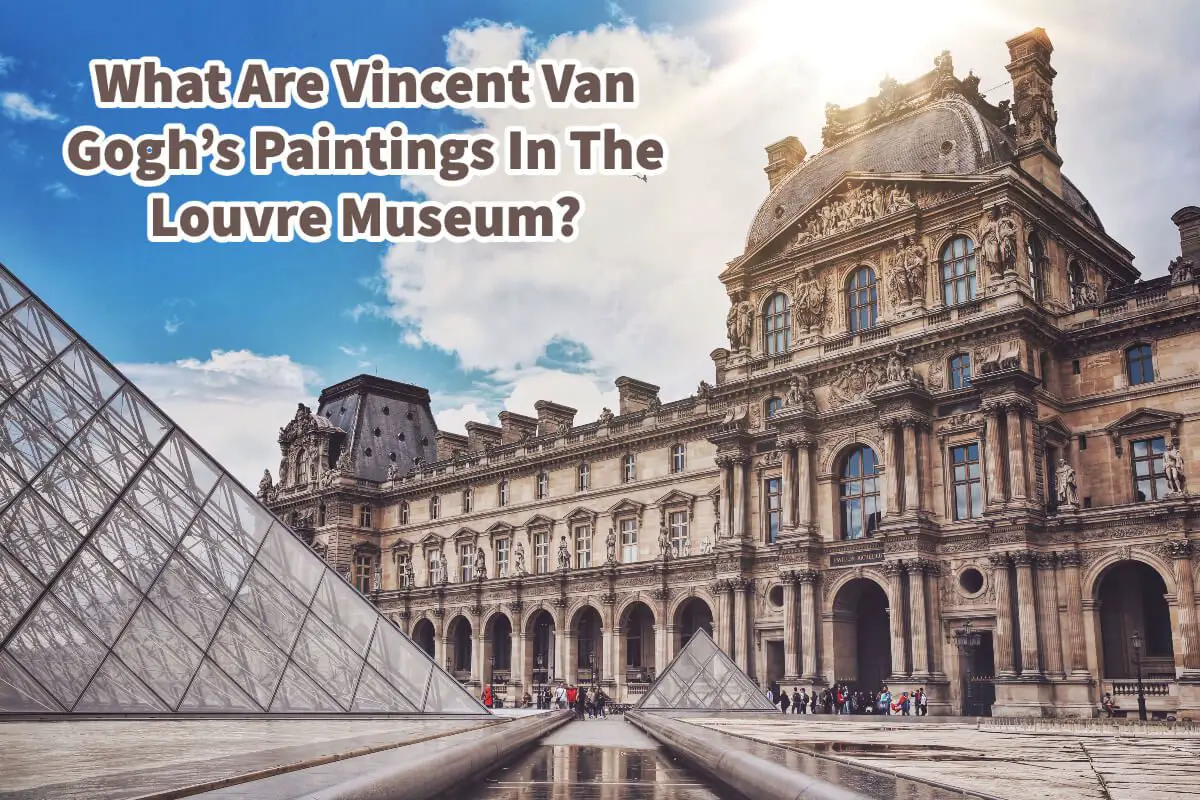The Louvre is one of the major museums in the world. The Louvre collection is rich with many different kinds of masterpieces.
The Louvre Museum does not have many Vincent Van Gogh Paintings; if you want to see some Vincent Van Gogh paintings in Paris, France, you should visit the Musee d’Orsay. The best place to see the most significant number of artwork by Vincent Van Gogh and to learn about his life is at the Van Gogh Museum in Amsterdam, Netherlands.
Table of Contents
- Discovering Vincent Van Gogh’s Masterpieces: Paris and Amsterdam
- Musee d’ Orsay Vs. Louvre Museum In Paris, France – Van Gogh Paintings
- The Van Gogh Museum Amsterdam Has The Largest Van Gogh Art Collection
- Vincent van Gogh: A Symphony of Passion and Paint – 10 Reasons
- The Timeless Allure of Vincent Van Gogh: Why He Remains a World-Class Artist
- Frequently Asked Questions
- Related Questions
Discovering Vincent Van Gogh’s Masterpieces: Paris and Amsterdam
While the renowned Louvre Museum in Paris is a treasure trove of art, it is not the primary destination for admirers of Vincent Van Gogh’s work. For those seeking to immerse themselves in Van Gogh’s vivid and vibrant paintings while in Paris, the Musee d’Orsay is a must-visit.
This museum houses a remarkable collection of Van Gogh’s art, offering insights into his unique style and the evolution of his work.
However, to experience the most comprehensive collection of Van Gogh’s artworks and to gain a deeper understanding of his life and artistic journey, the Van Gogh Museum in Amsterdam stands unparalleled. This dedicated museum boasts the most extensive collection of Van Gogh’s paintings and drawings and presents a detailed chronicle of his life. Visitors to the Van Gogh Museum can expect an intimate experience, where the story of Van Gogh’s artistic genius, struggles, and enduring influence on the art world are poignantly conveyed.
Whether you’re a long-time admirer or new to his work, the Van Gogh Museum in Amsterdam is the definitive destination to appreciate the legacy of one of the most influential figures in the history of Western art.
You Can See Some Vincent Van Gogh Paintings At Musee d’Orsay.
If you want to view some Vincent Van Gogh paintings in Paris, France, the museum you should visit is the Musee d’Orsay or the Orsay Museum.
The collection of the Musee d’ Orsay is much smaller than the Louvre, but they have some of Vincent Van Gogh’s artworks.
Here are some of the Vincent Van Gogh works of art you may see at the Musee d’Orsay in Paris, France:
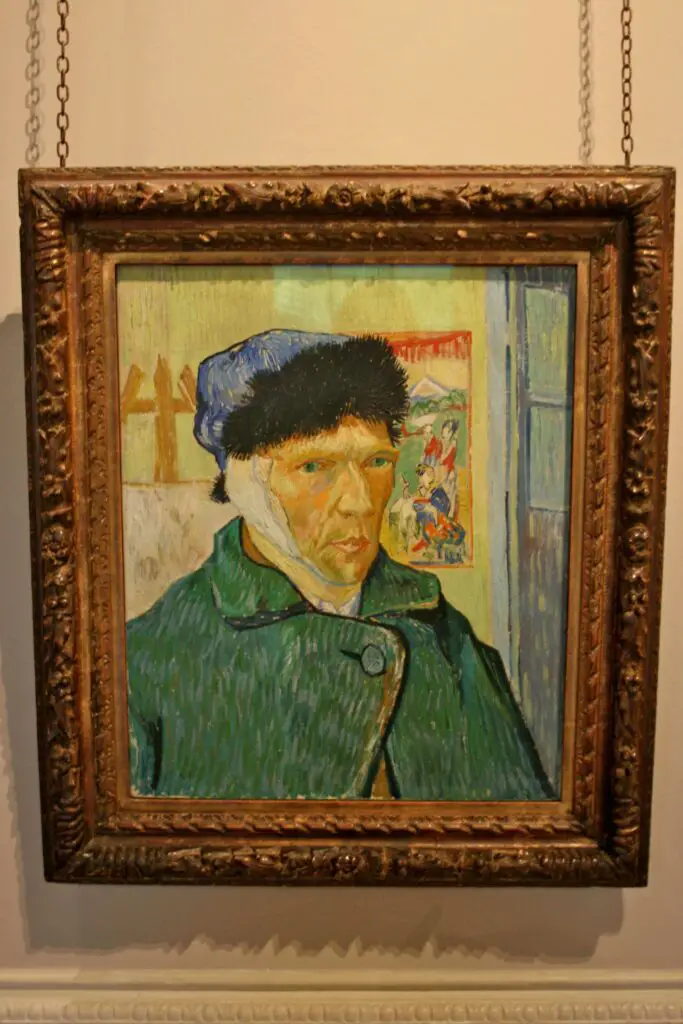
- Van Gogh, Self-Portrait with Bandaged Ear, (1889)
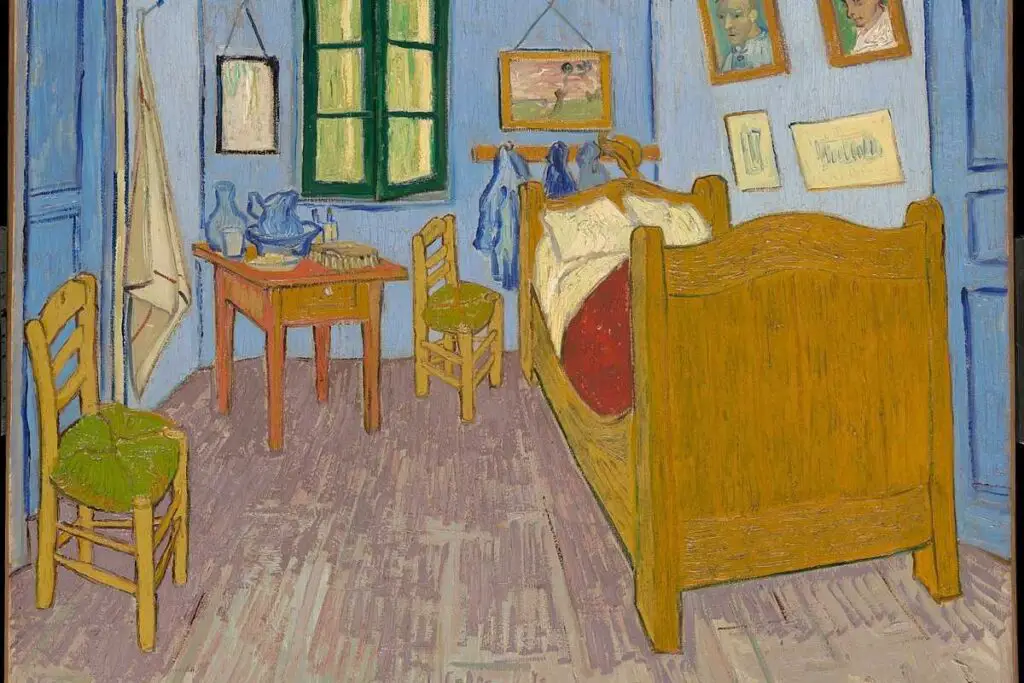
- La Chambre de Van Gogh a Arles (1889)

- Vincent Van Gogh (self portrait) (1853 – 1890)
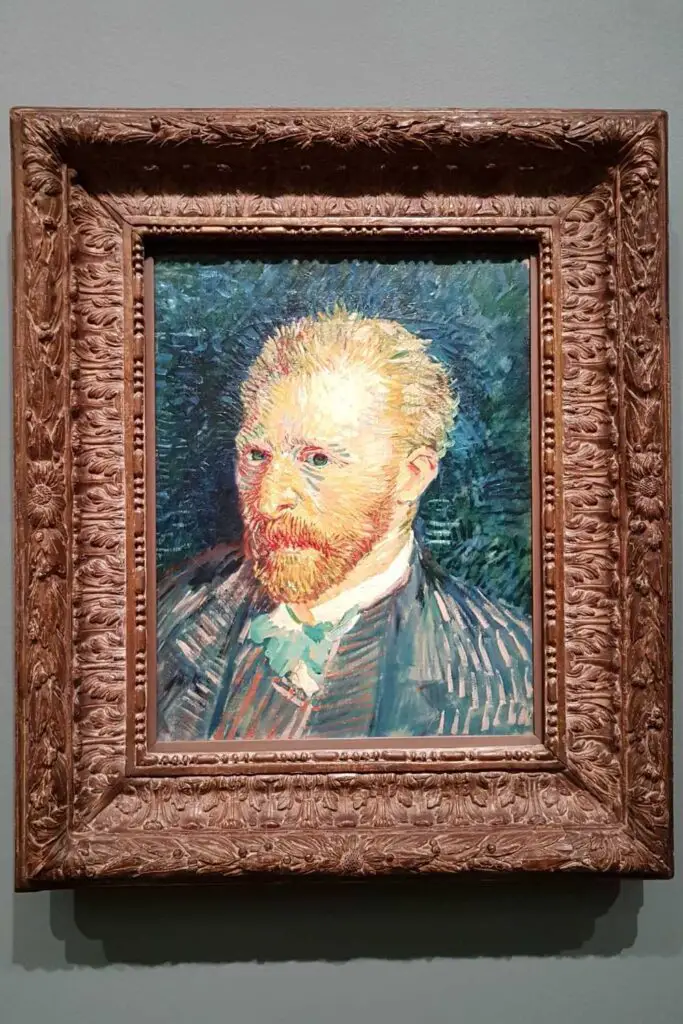
- Portrait de l’artiste (1887)
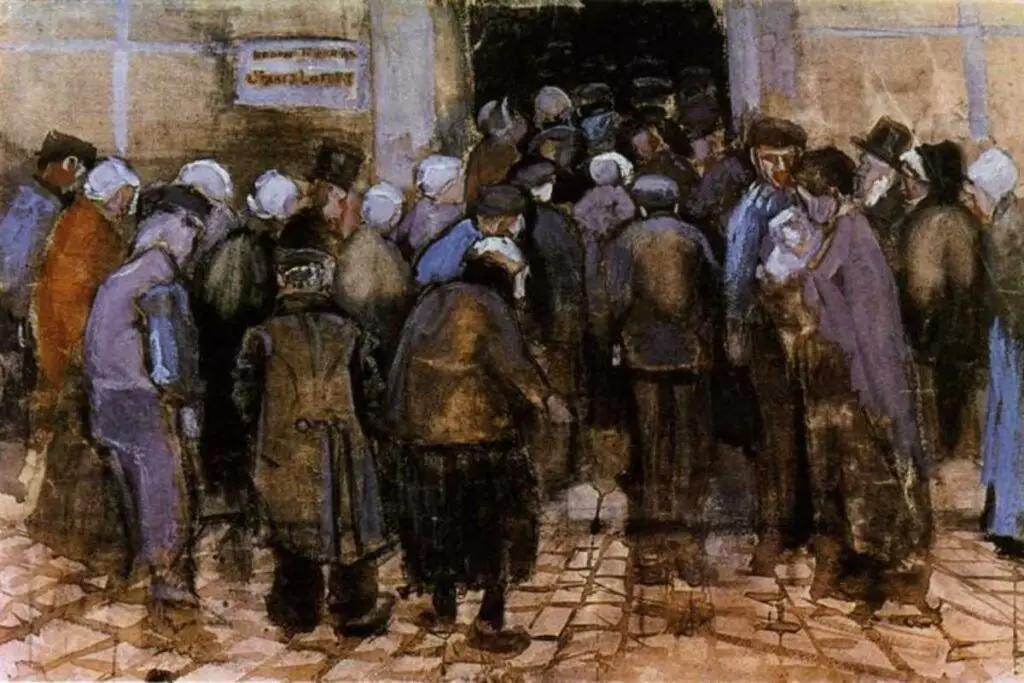
- La Loterie (1882)
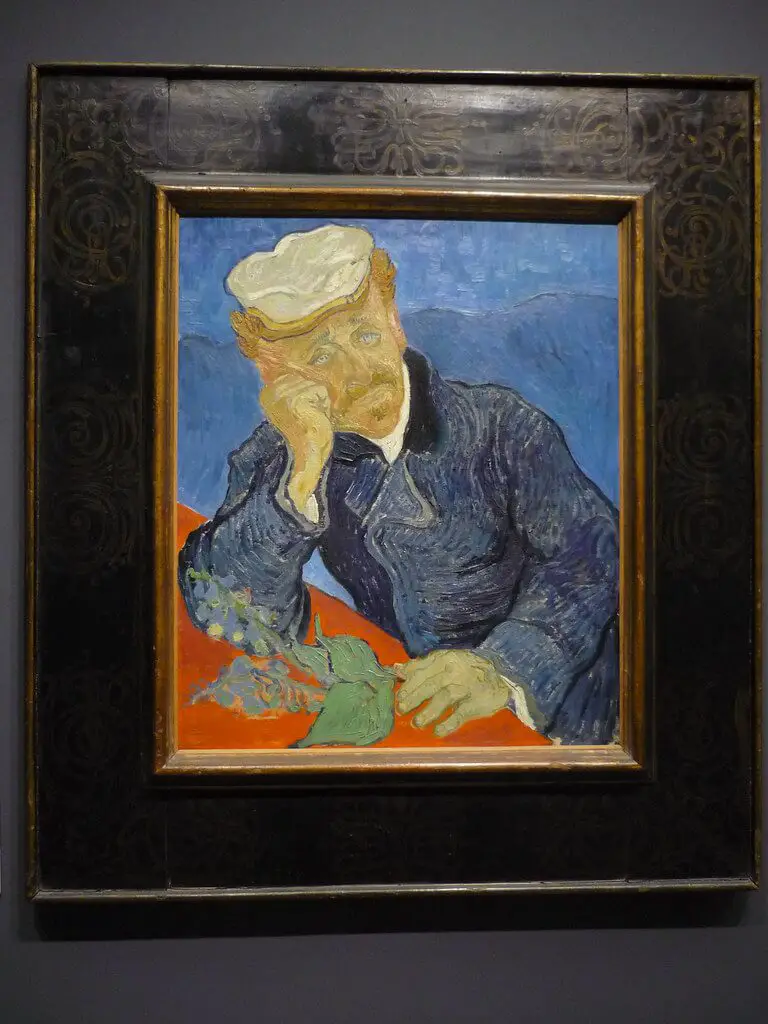
- Portrait du Docteur Gachet (1890)
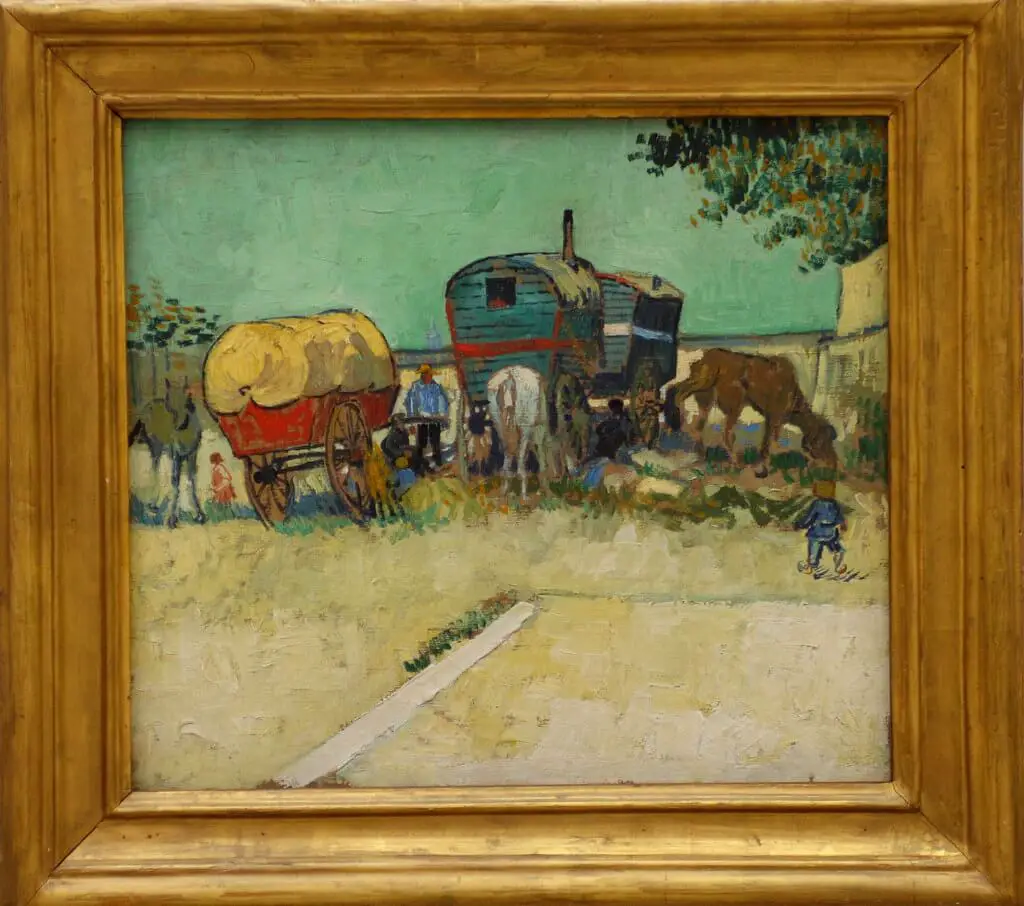
- Les Roulottes, campement de bohemiems aux environs d’Arles (1888)

- La Nuit etoilee (1888)

- Paysanne pres de latre (1885)
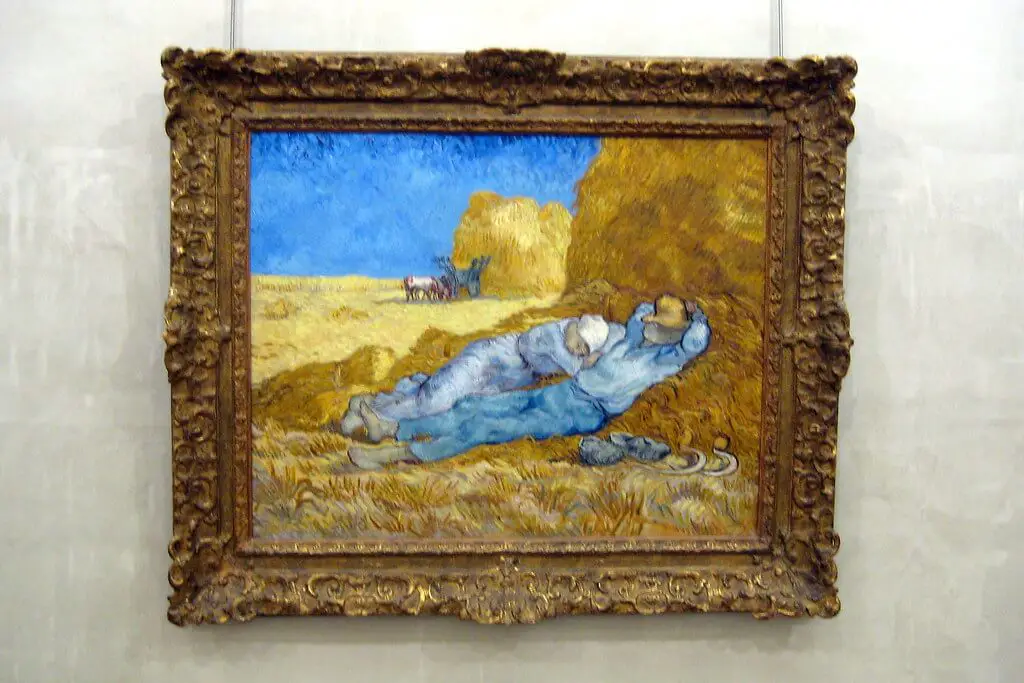
- La Meridienne (1890)
- Vaches dans un pre (1890)

- L’Italienne (1887)
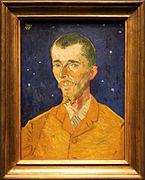
- Eugene Boch ( 1888)

- Ertilaires couronne imperiale das un vase de curve (1887)
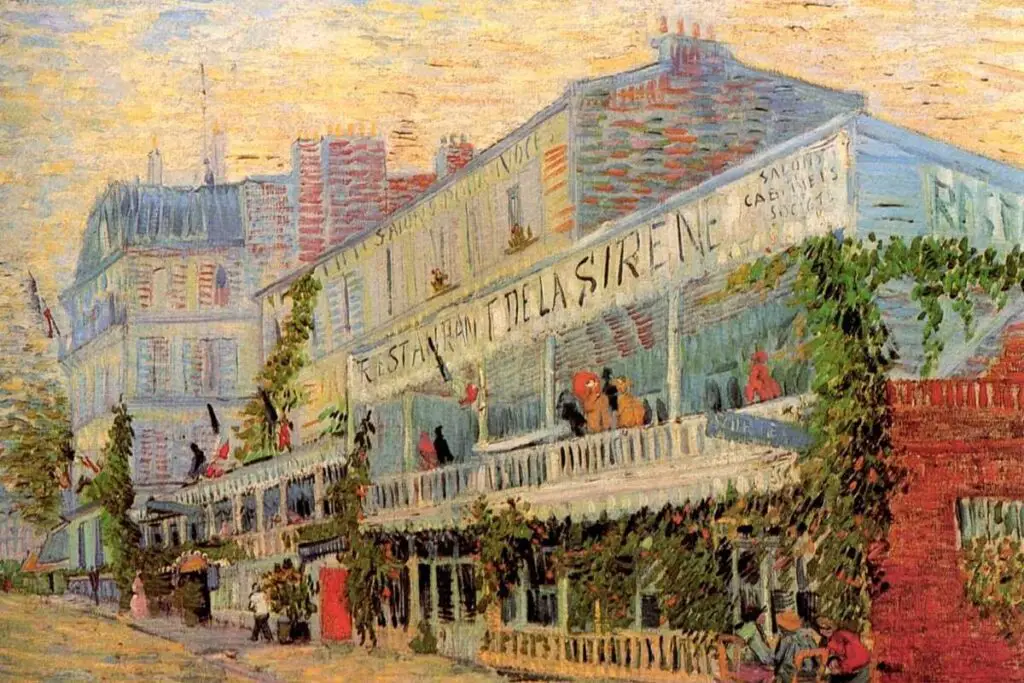
- Resturant de la Sirene a Asnieres (1887)
This is not a complete list, but some of the works you will recognize more than others. If your main focus is viewing some Van Gogh paintings in Paris, you should head to the Musee d’Orsay, not the Louvre Museum.
Listen To Our Podcast About Vincent Van Gogh’s Art In The Louvre Museum below or by clicking here.

Musee d’ Orsay Vs. Louvre Museum In Paris, France – Van Gogh Paintings
The Louvre Museum has thousands of pieces of art; it is a magnificent museum that is most famous for having the Mona Lisa by Leonardo da Vinci. But despite having such an important painting by Leonardo da Vinci, the Louvre has only acquired about three of Vincent Van Gogh’s paintings.
If you want to see paintings by Vincent Van Gogh in Paris, the Louvre is not the museum to see as the Louvre does not have a vast Vincent Van Gogh Art collection. The Louvre has some fabulous works of art by many influential artists, just not an extensive Vincent Van Gogh art collection.
You can find out more about visiting the Louvre Museum by clicking here.
If you want to see some Vincent Van Gogh paintings in Paris, the place to see them is at the Musee d’Orsay.
The Musee d’Orsay is a much smaller museum than the Louvre, but worth a visit as it is a lovely museum with great architecture. The Musee d’Orsay has about 2,000 works of art in its collection, which includes about 27 works of art created by Vincent Van Gogh.
At the Musee d’Orsay, you can find most of the Vincent Van Gogh paintings in rooms 71 and 72, or ask the museum staff to see if they have moved any of the collection.
You can learn more about visiting the Musee d’ Orsay by clicking here.
The Van Gogh Museum Amsterdam Has The Largest Van Gogh Art Collection
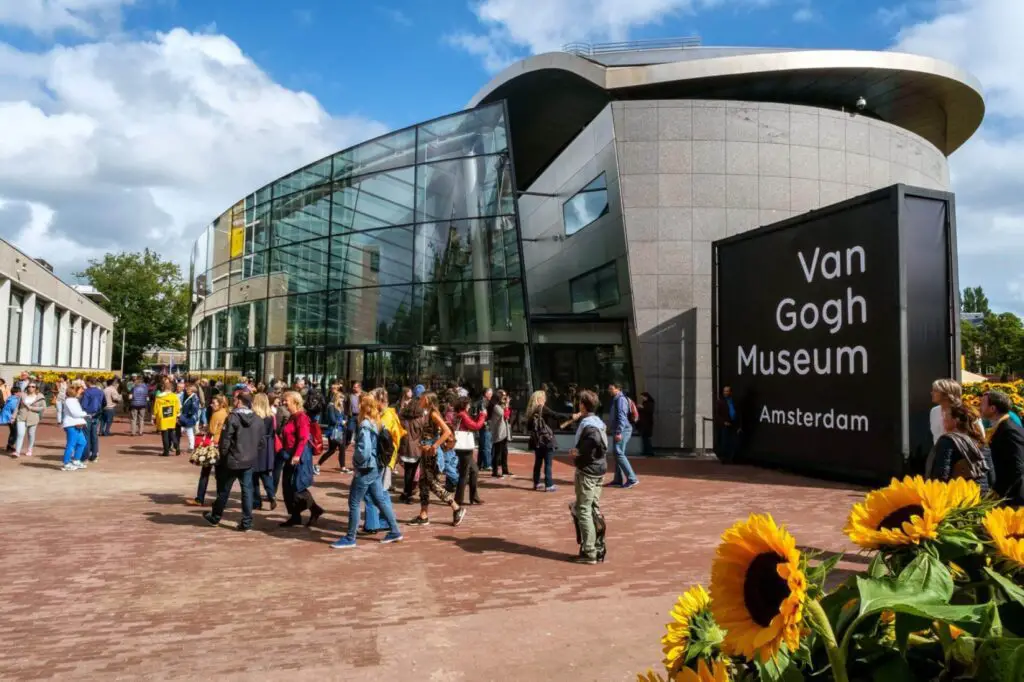
If your goal is to try to see and learn about Vincent Van Gogh in one place, then the place to visit is the Van Gogh Museum in Amsterdam, Netherlands. Unlike the Louvre Museum and the Musee d’Orsay, the Van Gogh Museum was built in devotion to Vincent Van Gogh, his life, and his artworks.
Vincent Van Gogh only sold one painting in his lifetime. When he died in 1890, he left all his paintings to his brother Theo. Theo was not only a brother but a dear friend and financial supporter. A few months after Vincent Van Gogh died, his brother Theo died in January 1891.
Theo left behind his wife, Johanna Van Gogh-, and their small infant son, Vincent Willem. Johanna Van Gogh Bonger is credited with ensuring that Vincent Van Gogh’s legacy continued.
You can read more about this incredible woman and her story by reading ”How Did Vincent Van Gogh’s Paintings Become Famous?” by clicking here.
Johanna Van Gogh Bonger kept many of the Vincent Van Gogh paintings, especially those she felt were the most important. She was known to have a keen eye for art and collecting.
Over the years, she sold some of Vincent Van Gogh’s paintings to raise funds and awareness for Vincent Van Gogh. However, Johanna Van Gogh-Bonger kept a large part of the Vincent Van Gogh Collection intact.
Her son Vincent Willem worked with the government of the Netherlands to donate the bulk of the Vincent Van Gogh paintings and collections to the Vincent Van Gogh Foundation. The Van Gogh Museum in Amsterdam was founded from this foundation.
Because so much of Van Gogh’s Artwork was never sold and kept by the Van Gogh family, the Van Gogh Museum in Amsterdam is the best place to see the most extensive collection of Van Gogh’s artwork.
In addition to works of art by Vincent Van Gogh, the museum also has artwork by other artists such as Paul Gauguin, Mary Cassatt, and Henri de Toulouse-Lautrec. Van Gogh also admired some paintings by older artists, such as Leon Lhermitte and Jean-Francois Millet.
Vincent van Gogh: A Symphony of Passion and Paint – 10 Reasons
Vincent van Gogh, an iconic name that resonates deeply within the annals of art history, is celebrated for his unparalleled contributions to Impressionism and Post-Impressionism.
Let’s delve into ten reasons that encapsulate why van Gogh is heralded as a true maestro in the realm of art:
- Intense Emotionality: Van Gogh’s paintings testify to his deep emotional range, capturing everything from his highest relations to his profound desolations, allowing viewers to connect intimately with his work.
- Vivid Color Palette: Shifting from the dark tones of his early work, van Gogh’s later paintings exploded with color, employing bold and unconventional palettes that challenged traditional painting norms.
- Evolution of Style: Throughout his brief career, van Gogh’s style evolved dramatically. From the somber tones of “The Potato Eaters” to the vibrant swirls of “Starry Night,” his adaptability showcased his expansive artistic prowess.
- Innovative Techniques: Van Gogh’s trademark thick, impasto brush strokes created texture and movement in his paintings, giving them tactile depth and dynamism.
- Personal Reflection: Many of his works, particularly his self-portraits, provide a deeply introspective look into his mind, offering a candid exploration of self, mental health, and human vulnerability.
- Landscapes Reimagined: In pieces like “The Wheat Field” series, van Gogh transformed ordinary landscapes into mesmerizing compositions of color and emotion, presenting nature through a deeply personal lens.
- Influential Correspondences: His letters, especially those to his brother Theo, offer a profound insight into the thoughts, philosophies, and inspirations behind his artworks, making him one of history’s most well-documented artists.
- Posthumous Recognition: While he faced obscurity and struggled with mental health during his lifetime, his posthumous ascent to fame underscores the timeless and universal appeal of his work.
- Impact on Art Movements: Van Gogh’s work laid the groundwork for the future art movements of the 20th century, especially Expressionism, with his emphasis on portraying raw emotion on canvas.
- Cultural Influence: Beyond the art community, Vincent van Gogh’s life and work have become cultural touchstones, referenced in music, literature, films, and even fashion, proving his enduring and wide-reaching legacy.
Vincent van Gogh’s life might have been marked by personal anguish, but his paintings—a whirlwind of color, emotion, and innovation—ensure his eternal standing in the pantheon of great artists.
The world continues to be captivated, inspired, and moved by his visionary creations.
The Timeless Allure of Vincent Van Gogh: Why He Remains a World-Class Artist
Even over a century after his passing, Vincent Van Gogh’s name resonates with art enthusiasts, students, and casual admirers alike. His vivid brushstrokes, emotional depth, and tragic life story combine to form a figure larger than life.
But why does Van Gogh continue to hold such a significant place in the pantheon of world-class artists? Here are some reasons why:
- Emotion on Canvas: Van Gogh had an unparalleled ability to convey emotion through his art. Whether it’s the swirling skies of “Starry Night” or the haunting gaze in his self-portraits, the rawness of his feelings is palpable, making a direct connection with the viewer.
- Innovative Techniques: While he wasn’t the only artist to employ impasto (thick applications of paint), Van Gogh’s usage was unique. His heavy, textured strokes became a signature technique, giving his paintings a three-dimensional quality that invites viewers to reach out and touch.
- A Life of Passion and Tragedy: Van Gogh’s struggles, from his mental health to tumultuous relationships, have become as famous as his art. This narrative adds layers of depth to his works, with many attempting to decipher his thoughts and feelings through his paintings.
- Evolution of Style: Van Gogh’s style saw dramatic changes from the somber tones of his early works in Holland to the luminous colors of his Provence period. This evolution offers a broad spectrum of appreciation and academic study.
- Letters to Theo: His correspondence with his brother Theo provides an invaluable insight into his thought processes, aspirations, and despair. These letters allow fans a closer look at the man behind the masterpieces, making him all the more relatable and intriguing.
- Cultural Influence: Van Gogh’s art and life have permeated popular culture. His influence can be seen in everything from movies and songs to fashion and design, solidifying his position as a global icon.
- Accessibility and Relatability: Despite being created in the late 19th century, Van Gogh’s works are timeless. They deal with universal themes like love, struggle, nature, and isolation. Today’s audience, especially in a world grappling with mental health issues, finds a kindred spirit in Van Gogh.
- Posthumous Fame: Ironically, Van Gogh’s celebrity primarily came after his death. The tragic element of unrecognized genius during his lifetime, only to be celebrated later, adds to his compelling narrative.
Vincent Van Gogh remains a significant world-class artist not just for his undeniable talent but also for the profound emotional connection he establishes with viewers, transcending time and geography.
His ability to touch souls, combined with a life story that reads like a novel, ensures that Van Gogh’s legacy will remain undiminished for generations to come.
Anita Louise Art is dedicated to art education, great artists, and inspiring others to find and create their art. We love art that uplifts and inspires. #ArtToMakeYouSmile! #ArtToMakeYouHappy!
If you want to see any of my art, you can find out more by clicking here. If you are interested in what inspires me and my paintings, you can discover more by clicking here.
We have a free newsletter and would love you to be part of our community; you can subscribe to the newsletter by clicking here. If you have any questions, I would be happy to talk to you. You can reach me, Anita, by clicking here.
Subscribe to our Anita Louise Art YouTube Channel with great videos and information by clicking here.
Join us for our podcast “5 Minutes With Art.” Spend just 5 minutes a week with us to discover and learn about great art and artists. You can find out more about our podcast by clicking here.
Frequently Asked Questions
Who is Vincent Van Gogh?
Vincent van Gogh was a Dutch post-impressionist painter known for his vivid and colorful paintings.
What is Starry Night?
Starry Night is one of Vincent van Gogh’s most famous paintings, depicting a night sky with swirling stars and a bright crescent moon.
Where is the Louvre located?
The Louvre is located in Paris, France
Is Starry Night in the Louvre?
No, Starry Night is not in the Louvre. It is part of the permanent collection of the Museum of Modern Art (MoMA) in New York City
Does the Louvre have any Vincent van Gogh paintings?
Yes, the Louvre has several Vincent van Gogh paintings, including “Self-Portrait” and “The Italian Woman.”
How many Vincent van Gogh paintings are in the Louvre?
The Louvre has a small collection of Vincent van Gogh paintings, which includes about five of his works.
What are some of Vincent van Gogh’s famous paintings?
Some of Vincent van Gogh’s famous paintings include Starry Night, Sunflowers, and The Potato Eaters.
When did Vincent van Gogh die?
: Vincent van Gogh died on July 29, 1890.
Why is Vincent van Gogh important to art history?
Vincent van Gogh is important to art history because he played a crucial role in the development of modern art.
What is the Louvre’s most famous painting?
The Louvre’s most famous painting is the Mona Lisa by Leonardo da Vinci.
How do I get to the Louvre?
The Louvre is easily accessible by public transportation in Paris, including the Metro and buses.
Related Questions
How Did Vincent Van Gogh’s Paintings Become Famous?
Vincent van Gogh’s painting became famous because his sister-in-law took it upon herself after his death and the death of her husband, Theo to find a way to get his paintings and name out to the world. She was brilliant and savvy in how she did this. By the time she died in 1925, Vicent van Gogh was world-renowned.
By clicking here, you can learn more by reading How Did Vincent Van Gogh’s Paintings Become Famous?.
What Was The Impact Of Vincent Van Gogh On The Art World?
Van Gogh used color, form, and emotions in his art. He had a bright palette that was individualized for his time. Even though he did not see a lot of success during his life after he died, the impact of his art can be seen in both the Expressionism and Fauvism movements that were taking place in Europe.
By clicking here, you can learn more by reading What Was The Impact Of Vincent Van Gogh On The Art World?
Why Is Van Gogh Considered Such a Great Artist?
Many things make Vincent Van Gogh unique and great as an artist. He had a great way to use color in his heart, but more than that, he was an artist who set and paved the way, and his brushstroke technique used color and his design ability. What is interesting about all this he did this as a self-taught artist.
By clicking here, you can discover more by reading Why Is Van Gogh Considered Such a Great Artist?

